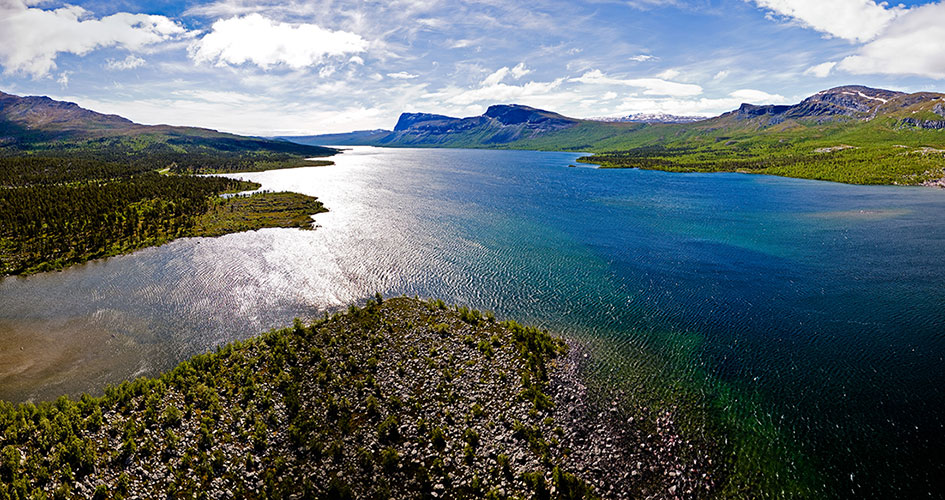 Foto: Carl-Johan Utsi
Foto: Carl-Johan UtsiPeople in the area
The long narrow valley extending through Stora Sjöfallet/Stuor Muorkke is a gateway not only for the local population along the road and lake system but also for many Sami villages both north and south of the national park.
The Juleävdnos/Stora Luleälven lake system has always been an important migratory route during both winter and summer. Along the entire lake system there are new and old settlements.
Remnants of old settlements
The fact that people have always moved around in the area is also apparent from the many remnants that exist in the area. They range from the oldest Stone Age to the present day. In the national park there are old settlements and a system of pitfalls. The fireplaces are old, but it is difficult to know exactly how old because people have continued to use many of them until the present.
The names tell stories
The names tell stories about the people who have lived here. Despite their steep walls, the distinctive Giergav mountains have got their name from the Sami word for cradle. In addition to the fact that the eastern part of the range is shaped like a cradle, the ground there becomes bare early in the spring. The reindeer can stop during the migration to graze and rest. Jabmeksuollu, which is located by the old waterfall, is a rocky island that has always been surrounded by open water. It is a burial island that is protected by law as an area with ancient cultural remains. The village of Rijtjem at the end of the road is the main settlement for the Unna tjerusj Sami village.
Hydroelectric power and tourism
In Stora Sjöfallet/Stuor Muorkke there are also many traces of hydroelectric power construction and tourism. The new naturum, the visitor centre for the Laponia World Heritage Site tells about the area. The Sami villages have signed off on a suitable place for construction and have been included in planning how information on the area will appear.
Share with your friends
Share this page with your friends on Facebook, X (formerly Twitter), Google+ and e-mail.





